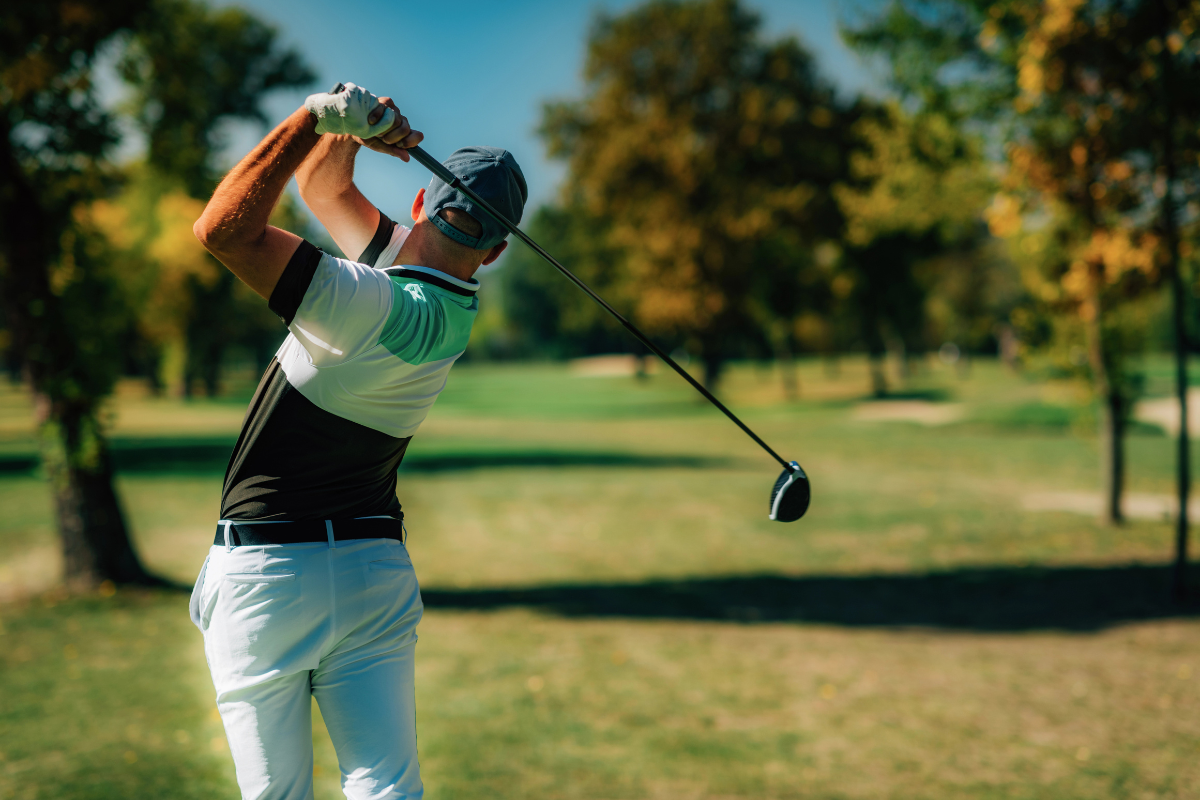

It’s not new that golfers are obsessed with power in their golf swing and how far they can hit the ball. Sure, it helps make your game easier, but it also helps you earn bragging rights when you’re out golfing with your friends. Power in golf is like having a secret weapon—launch the ball farther, and suddenly the game feels a whole lot easier (and way more fun). Golfers are obsessed with hitting it longer because it leads to shorter approach shots, easier scoring opportunities, and a competitive edge, especially on longer courses. There’s no doubt that hitting bombs is the ultimate flex.
Watch What’s Trending Now!
But if you want to add serious distance to your drives, it’s time to train like the big hitters. Players like Rory McIlroy and Bryson DeChambeau didn’t just wake up one day hitting it long—they trained for explosive, powerful bodies that can move efficiently and with force. While technique and timing are essential, raw athletic power can turn an average drive into a powerful one. That’s where smart training comes in.
Let’s break down the movements the longest hitters are using, focusing on five types of exercises that you can incorporate into your training routine.
ADVERTISEMENT
Top Stories
Lee Trevino, 86, Leaves Golf World Hanging on Every Word at PNC: ‘I’ve Been Digging Worms’

Paige Spiranac Shares Her Mom’s Honest Views on Controversial Career Decisions

LIV Golf Issues Statement as Pro Announces Shock Retirement After Getting Relegated

‘Losers’: PGA Tour Pro Blasts Fan Behavior After Viral NFL Arena Incident

Korean PGA Tour Star Clears the Air on LIV Golf Rumors With Blunt Message

1. Lower Body Explosives
One of the most important ways to build power is by learning how to use Ground Reactive Forces (GRF). Ground reactive forces are the energy you generate by pushing into the ground during your swing, and the harder and more efficiently you push, the more force travels up through your body and into the club, increasing speed and power. It’s a key reason why strong legs and explosive lower-body movement matter in hitting it long. And one of the best ways to train for this is by training your lower body through explosive movements like box jumps or broad jumps.
Jumping is all about explosive power, and that’s exactly what you need to create clubhead speed. These are crucial as it’s not enough for golfers to be just strong. They also need to be fast and explosive, given that they have very little time to generate force in a golf swing. Broad jumps help train horizontal power (just like driving the ball), while box jumps add vertical explosiveness. Single-leg jumps build balance, coordination, and unilateral power, which is directly relevant to the weight shift and leg drive in your swing.
ADVERTISEMENT
Try this: 3 sets of 3 broad jumps, 3 box jumps (low-medium height), and 3 single-leg jumps per side. Rest between sets to maintain explosiveness. Here’s a clear instruction on box jumps and broad jumps by the Titleist Performance Institute.
ADVERTISEMENT
2. Squats
Another great exercise to train your lower body, focusing on glute strength, is squats. Squats are the foundation of lower-body strength, and in golf, your legs are your engine. “Every golfer that I train does some form of squat. They’re superb for increasing lower body mass, strength, and power, all of which will help boost club head speed,” says Jamie Greaves, a TPI-certified S&C Coach, who also trains LPGA pro, Charley Hull.
Simple squats help build raw power through the hips, glutes, and quads, which all fire during the downswing. Meanwhile, split squats challenge single-leg stability, which is crucial in a sport where your weight shifts dynamically through the swing. Think of the squat as your ‘drive generator’. More leg strength = more ground force = more distance.
Try this: 3 sets of 12 reps of simple weighted squats, followed by 3 sets of 5 reps of dumbbell split squats per leg. Here’s a clear instruction by Jamie Greaves as he demonstrates different types of squats.
ADVERTISEMENT
3. Hinge
One of the most crucial factors in having power in your golf swing is maximum hip mobility. And hinge movements like deadlifts train the hips to move properly by emphasizing a strong, controlled bend at the hips while keeping the spine stable. This pattern improves hip mobility by strengthening the muscles around the hips and teaching them to move through a full range of motion safely. Over time, better hip mobility means more powerful, efficient, and injury-resistant movement.
Conventional deadlifts build overall strength and force production, while Romanian deadlifts (RDLs) challenge your ability to control movement and build hip stability.
ADVERTISEMENT
Try this: 3 sets of 5 reps of conventional deadlifts (moderate-heavy weight) and 3 sets of 8 RDLs with dumbbells or a barbell. It’s always recommended to perform deadlifts under supervision to perform them correctly and avoid injury.
🎥 Repost from @taylormadegolf 🔥
Rory McIlroy dialing in the long drive for the Wells Fargo Championship at Quail Hollow 🟧#RoryMcIlroy #Trackman #Golf pic.twitter.com/6qIVymU8IN
— Trackman Golf (@TrackmanGolf) May 10, 2024
ADVERTISEMENT
4. Rotational movements
Golf is a rotational sport, so it’s no surprise that rotational power is also a big piece of the distance puzzle. While simple rotational exercises with bands, like thoracic rotation or wood chops, help improve rotational stability, medicine ball rotational throws work the best. Thrown against a wall or into the ground, it helps train the same movement patterns used in the golf swing—fast, explosive, and controlled. These exercises improve your ability to transfer power from your lower body through your core to your upper body, while also improving your upper body rotational ability.
Try this: 3 sets of 6 medicine ball rotational throws per side, focusing on speed and intent, not just strength.
ADVERTISEMENT
5. Training your core
A common mistake most golfers make in the gym is not giving enough importance to training their core. Sure, if you have strong legs, you can still drive the ball far, but not everyone can pull that off looking like John Daly. A strong core isn’t just about abs—it’s about transferring power efficiently and staying stable throughout the swing. “If the glutes are the King of the Swing, then the core is the Queen,” says an instructor from TPI. Training your core will help you rotate better, while also keeping your lower back stable and protecting your lumbar region from injury. Simple High Plank variations help develop the control and explosiveness needed to swing faster without losing balance or form.
Try this: Two sets of simple high plank holds for 60 seconds or the plank matrix as demonstrated by TPI.
It’s important to perform these exercises regularly if you want to see results on the golf course. While these exercises, coupled with specific swing speed training, will give you an added advantage, it’s also important to remember that technique in your golf swing matters. Power in golf isn’t just about swinging harder; it’s about training smarter. Add these five exercise types into your weekly routine 2–3 times per week, and you’ll build the kind of strength and explosiveness that translates directly to longer drives. It takes work, but if hitting bombs is the goal, these moves are your launchpad.
ADVERTISEMENT
ADVERTISEMENT
ADVERTISEMENT
ADVERTISEMENT

